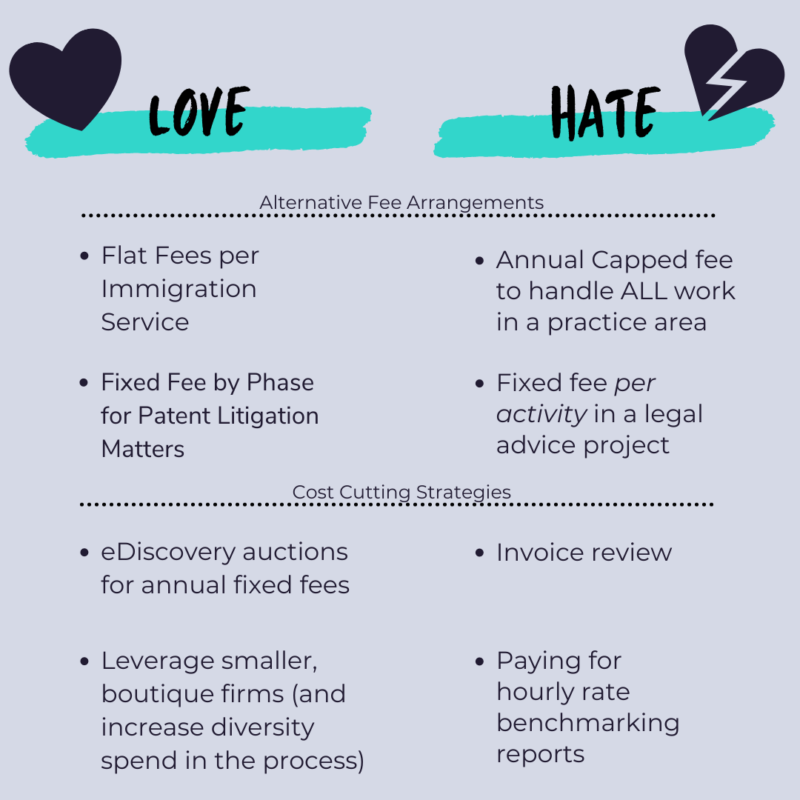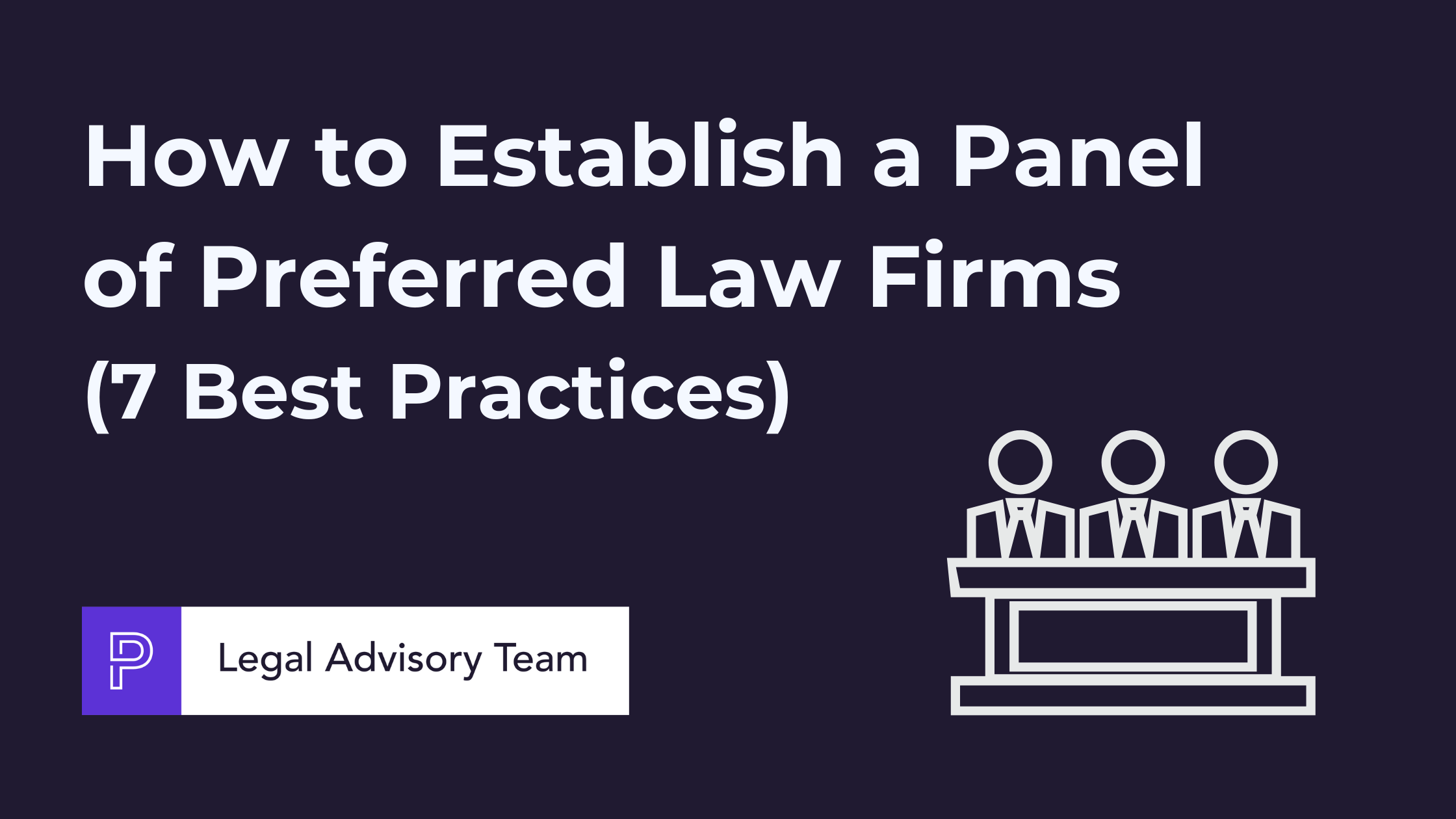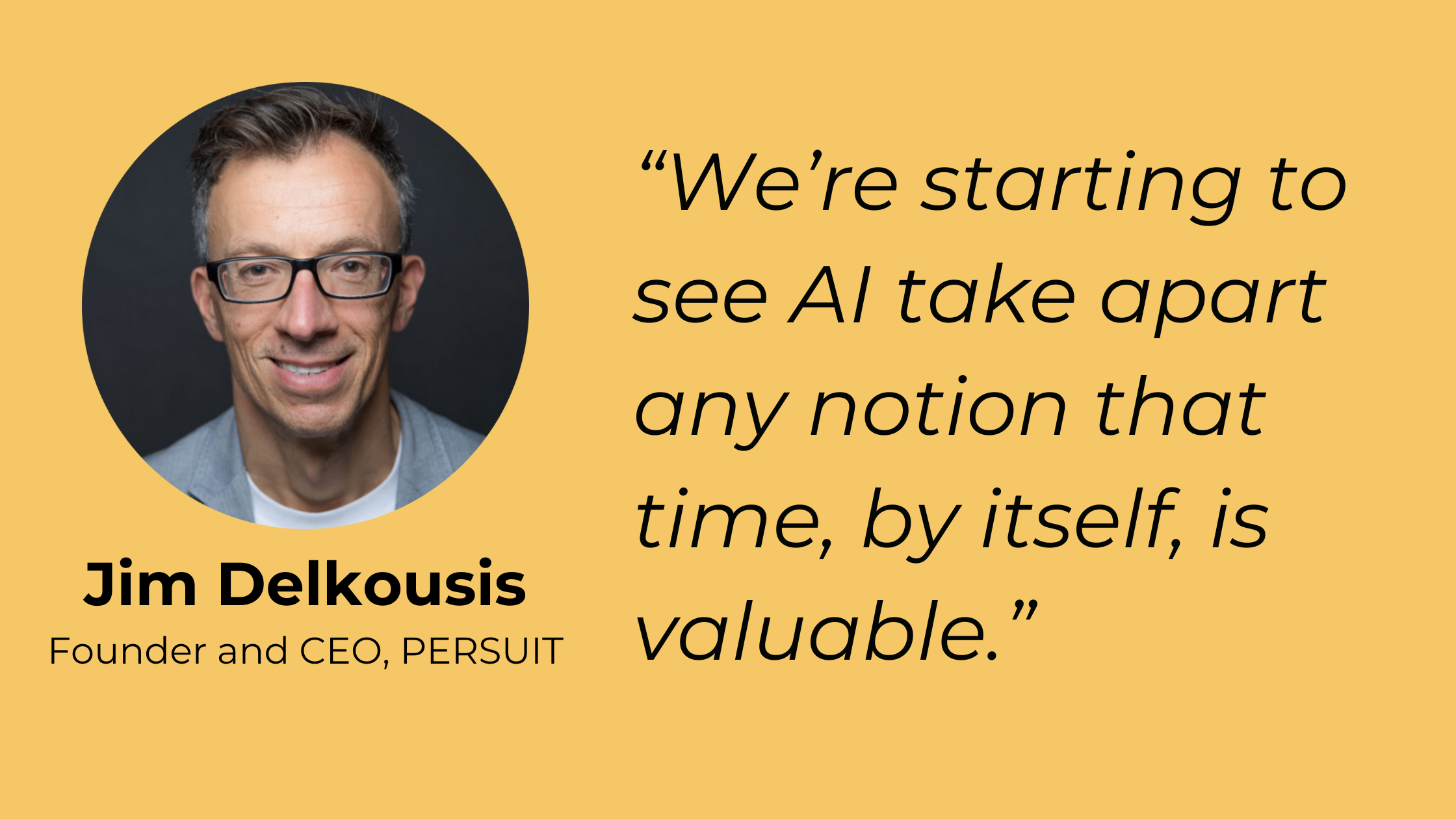
What new legal operations strategies do we love and which do we hate? It's 2021...time for a refresh of the list!
East Lansing, Michigan is a classic college town that I called home during law school. I would hike into the snow-filled streets of my Tim Hortons adjacent apartment parking lot, pick the frost off my windshield, and drive to my legal internship while quizzing myself on what a 12b (6) motion stood for. One day I found myself spinning in circles uncontrollably as I hit a patch of black ice (completely unfamiliar to a Southern California native). After the accident, I had to take my car into the shop for some repairs and the mechanic said it would cost me $200/hour. I said, well how many hours will it take, he said he didn’t know. Begrudgingly I went to work with several questions about the stupidity of ‘billable hours’ for my law department bosses to weigh in on.
When I arrived, I joined into a conversation the team was having – more of a laughing row- about how one of the lawyers spends thousands of dollars a week in legal fees from picking up the phone and calling the partner with some basic questions. I asked why the law firm would bill for something like that and they explained how partners’ and associates’ performance is measured based on how many hours of billable revenue they bring into the firm. “But doesn’t that incentivize them to be inefficient? And why do clients put up with it – it’s so much better to just know exactly how much you need to pay” I said. My colleague’s answer was that “firms are good about being efficient usually....and they have ethical standards. Not to mention, we don’t let them over-bill for things.” I accepted the answer at the time.
Upon further examination, I realized that millions of dollars a year is spent on legal invoice review services and even more on invoicing software designed with the purpose of helping in-house teams accurately figure out what in the world the firm is doing to rack up so many billables.
If the billable hour in the legal industry was truly an efficient and trustworthy model, then corporates wouldn’t have a carve-out from the enterprise’s PO system (e.g., ARIBA, Coupa, etc.). They wouldn’t spend $1M / year on an e-billing platform, they would simply issue a PO to the firm and pay whatever bill the firm says is due. But the fact is – they don’t trust the firms not to overbill.
A far more effective and efficient method is to pre-define the scope of work and agree to a fixed amount for providing the service that the client has defined, in other words, to engage in an Alternative Fee Arrangement (“AFA”).
Let’s look at my favorite AFAs and cost-cutting strategies in 2021, and, in the spirit of looking back on law school days when there was as much vigorous debate about the best running back to insert into one’s fantasy football lineup as there was conjecture over the latest supreme court decision, I figured I would mirror this blog after the popular fantasy football column, “LOVE/HATE” by ESPN’s Matthew Berry. Enjoy!
As we look forward to the new year and you plan your legal operations strategy, here are some things to consider:
Alternative Fee Arrangements I LOVE
Flat Fees per Immigration Service
As if a global pandemic wasn’t enough to deal with, 2020 was also terrifying if you were an immigrant in the United States with border shutdowns and threats of taking away VISAs for certain countries. A legal service that is an excellent candidate for pure flat fees is immigration. We’ve seen clients bid out all of their immigration services: H1B Visa Petitions, L Visa Extensions, Form I-485 Filings, Requests for Evidence, etc. to obtain flat fees for each service (e.g., $5,000 for a Green Card Process Permanent Labor Certification) and then run a reverse auction to drive down the price of each of those services.
Fixed Fee by Phase for Patent Litigation Matters
Patent litigation is on the rise in 2020 likely due to the economic impacts of the Coronavirus (see White & Case article here). By making a few assumptions at the outset of a new patent litigation matter (e.g. 2 IPRs, a section 101 motion, 5 experts), companies can come to fixed fees to handle the matter with their firms that also account for any material deviations in those assumptions. For instance, we’ve seen AFAs for $4M to handle a patent litigation from the start through trial with some pre-defined triggers that would allow for adjustments. Since the firm breaks out the fixed fee into phases, it’s easy to adjust based on actual changes to the scope of work rather than allowing billable hours to be the basis for the adjustment.
Alternative Fee Arrangements I HATE
Annual Capped fee to handle all Work in a Practice Area
Separate from the fact that I generally prefer fixed fees to capped fees for various reasons (see pros and cons of AFA types here) – a capped fee to handle all work in a practice area for a year is a poor application for a cap. The reason I dislike this approach is because capped fees already transfer all the risk to the law firm. That is ok where the ability to control how the project gets done and the amount of effort that will be required is in the firm’s hands. However, taking on all work for a practice area (let’s say all real estate agreements including any advice the client wants) is so dependent on the amount of work that client assigns to the firm and is impossible to predict at the outset. The combination of the firm taking on the risk and the scope being ambiguous means that either 1) the firm will set the cap way too high for it be meaningful or 2) the firm will ask for adjustments constantly if it’s underwater.
Fixed fee per activity in a legal advice project
While in litigation, defining the fixed fee for specific activities (e.g. $20k per deposition) is very helpful because the scope can change later and this makes for easier adjustments, it’s not necessary where the project is more well-defined. For instance, if you have a project to obtain legal advice as to recent law change, the project is simple enough to just get a pure flat fee. You don’t need to break it out into, let’s say, fixed fee for 10 hours of research, fixed fee for the memo, etc. – that is just too granular and over complicated. Instead, agree to a flat fee to handle the project and let both sides share in the risk that greater or fewer hours may be required than originally anticipated. Clients should be ok with firms getting the work done efficiently so long as they obtained the best flat fee they could (this is where RFPs can help).

Cost Cutting Strategies I love
eDiscovery auctions for annual fixed fees
There is a high degree of cost competitiveness in the eDiscovery space as technology has become more commoditized. Further, the value proposition of eDiscovery services is so greatly tied to cost savings to begin with that corporations need to ensure that they are regularly doing their due diligence to assess the market and drive down fees. We’ve seen numerous reverse auctions to obtain annual fixed fees broken into two sections: 1) technology and 2) document review based on present volume assumptions. These have driven enormous savings and ensured that the client was finding alternative, qualified sources to handle matters in times where their primary vendor may have been at capacity.
Leverage smaller, boutique firms (and increase diversity spend in the process)
There are many well-qualified firms that are highly reputable, retain experts in a given practice area, and provide the same quality of service as most of the global players at 2/3 of the price. Further, for those corporations looking to increase spend with MWBE owned firms, many former BIG Law partners started their own practice, and have built a very successful organization with much lower rates – and many of these are members of diversity organizations like NAMWOLF. We’re seeing corporations leveraging these firms more and more and with great results.
Cost Cutting Strategies I hate
Invoice Review
This is more akin to cough syrup than a prescription to solve a problem. In other words, invoice review is a costly way to address the symptom that results – inefficiency and overbilling - from core problem - the billable hour. I’d rather find ways to address the underlying disease.
Paying for Hourly Rate Benchmarking Reports
Sure, it’s important to know that you’re getting a good hourly rate, but the utility of knowing the benchmark rate for the service is limited for a few reasons: 1) the data may be stale, 2) the data may not be granular enough to be applicable, 3) even if it is, it may not lead to a significant advantage in your rate negotiation, and 4) a lower rate can be nullified by a firm billing more hours…




